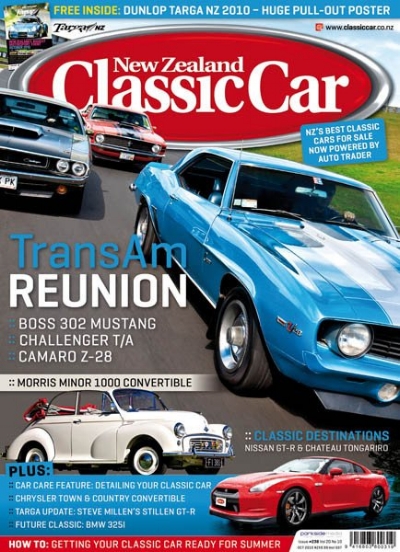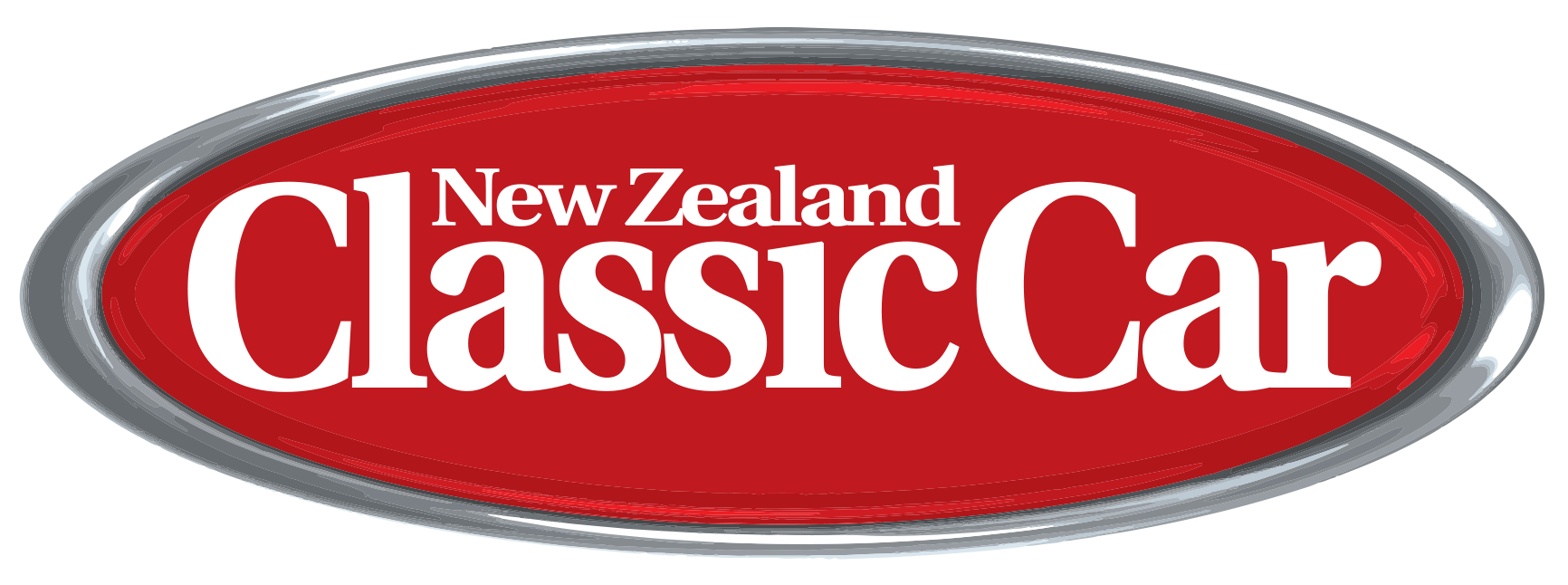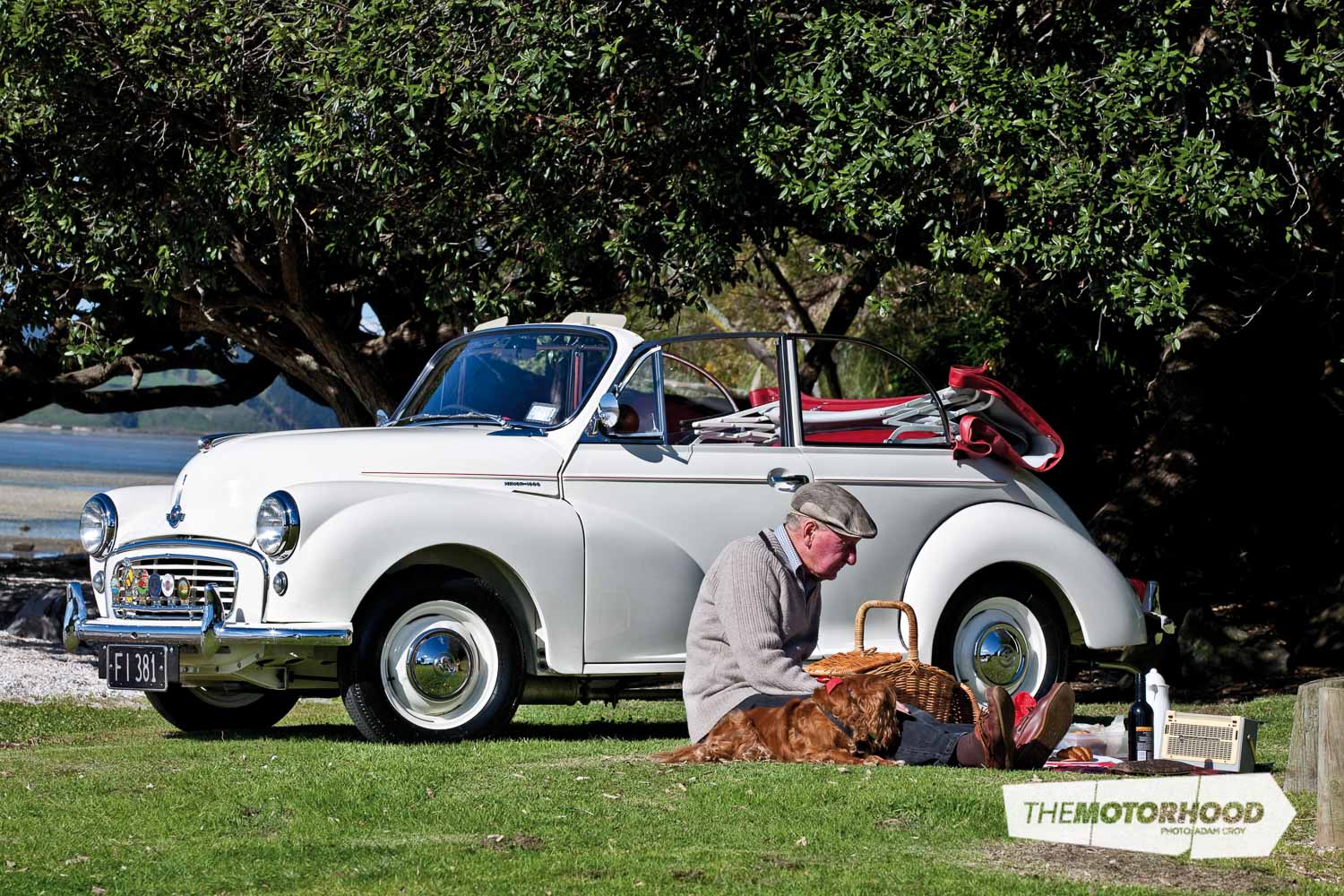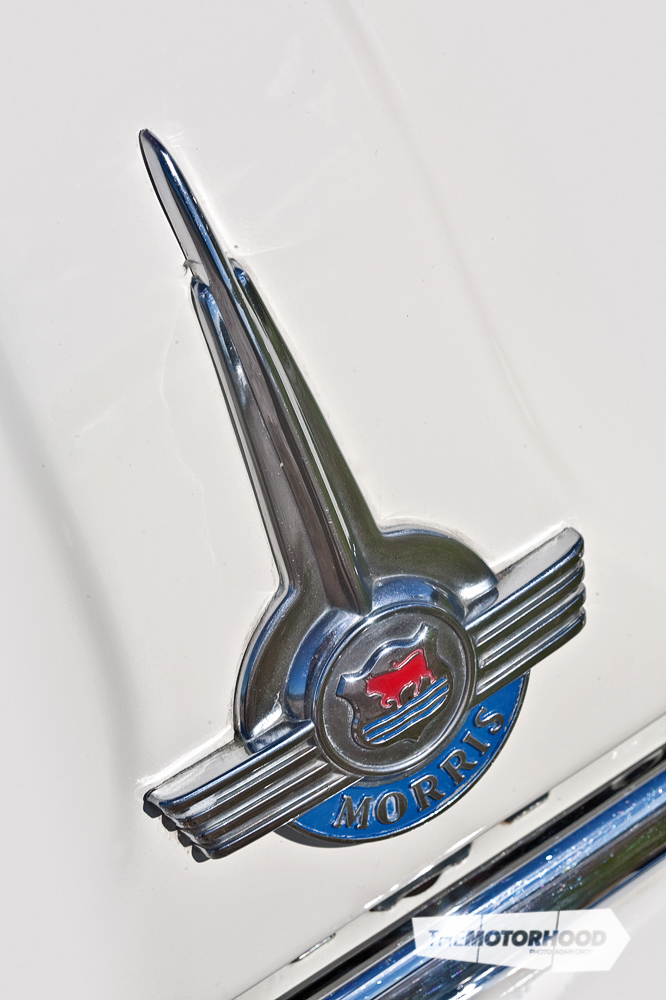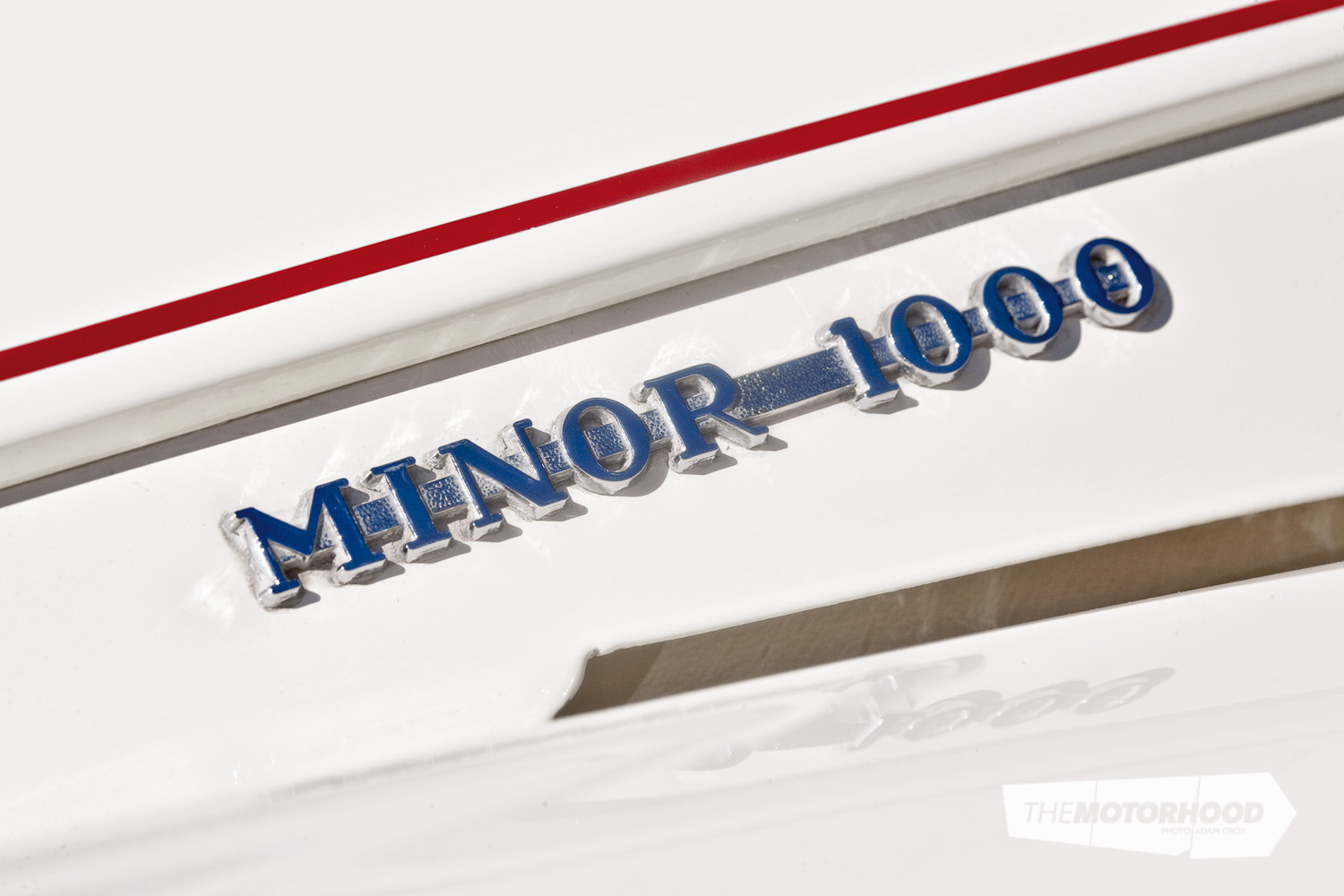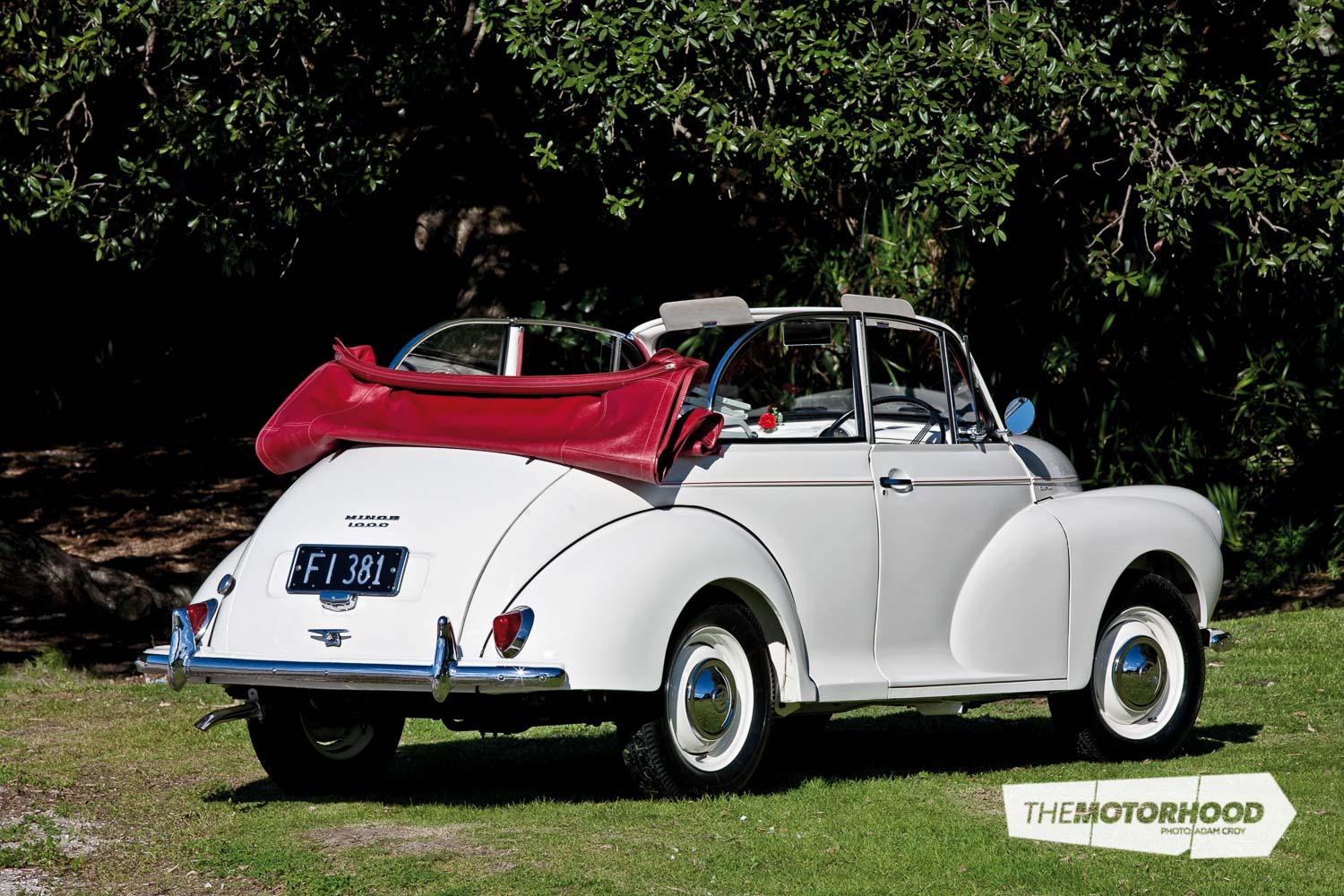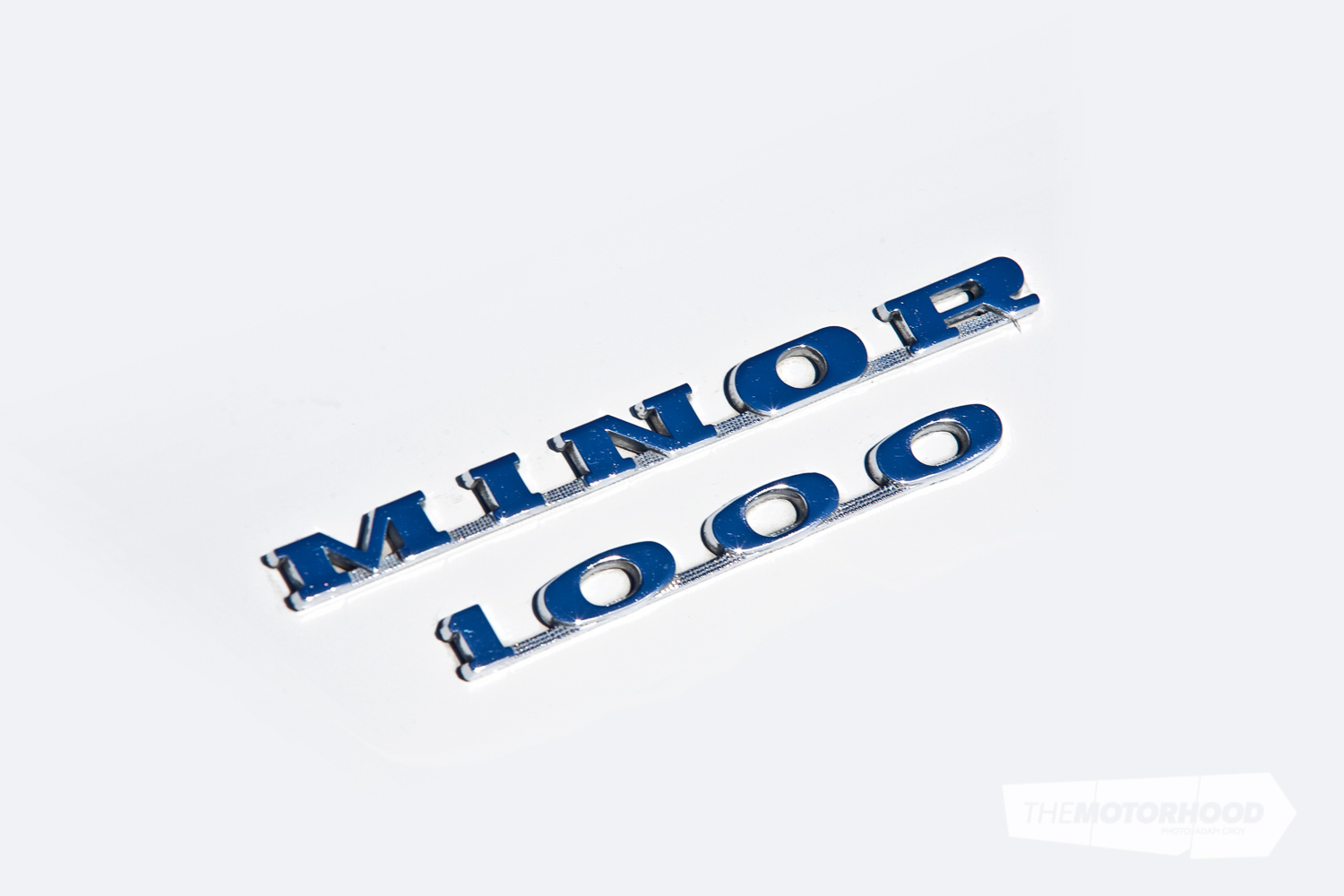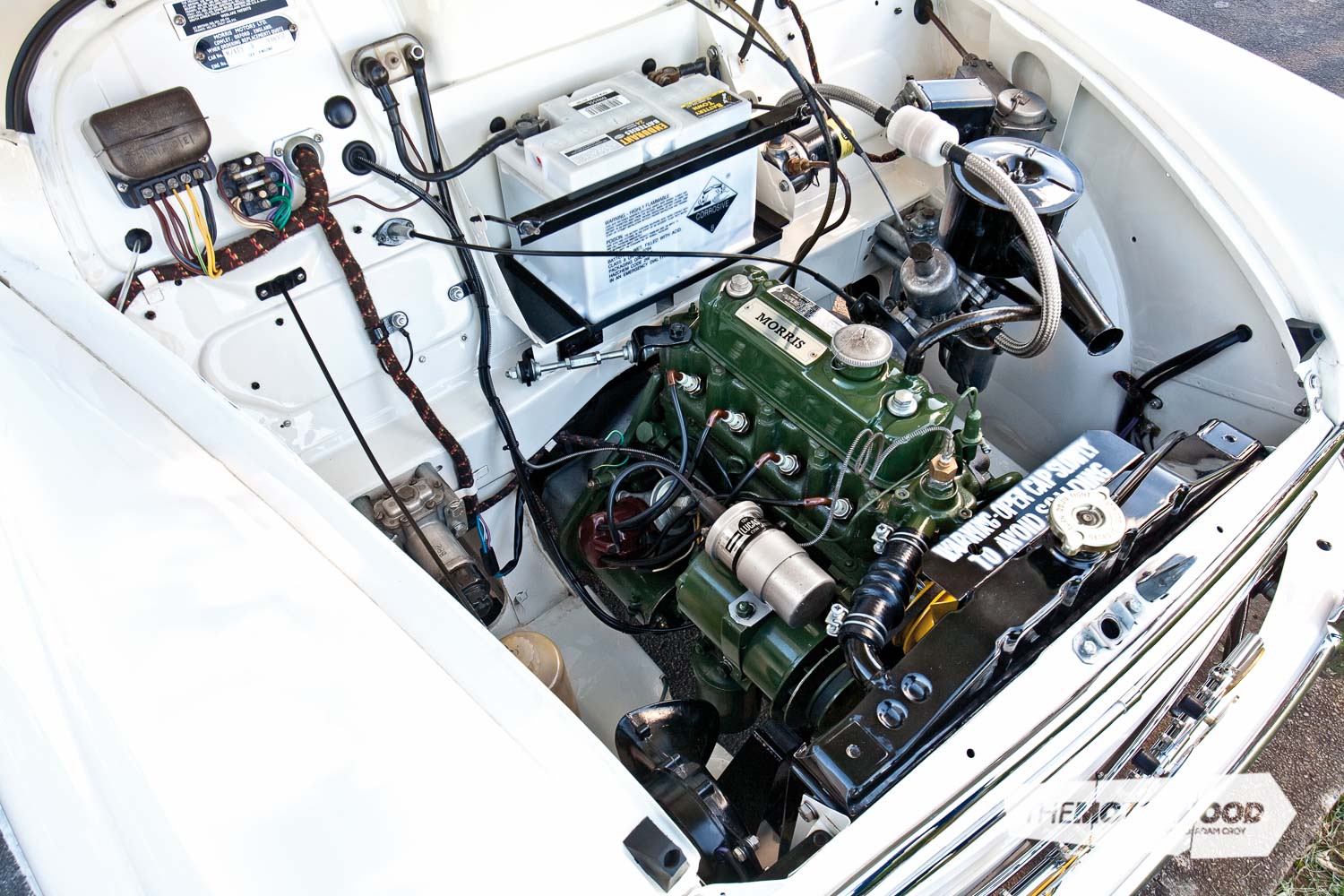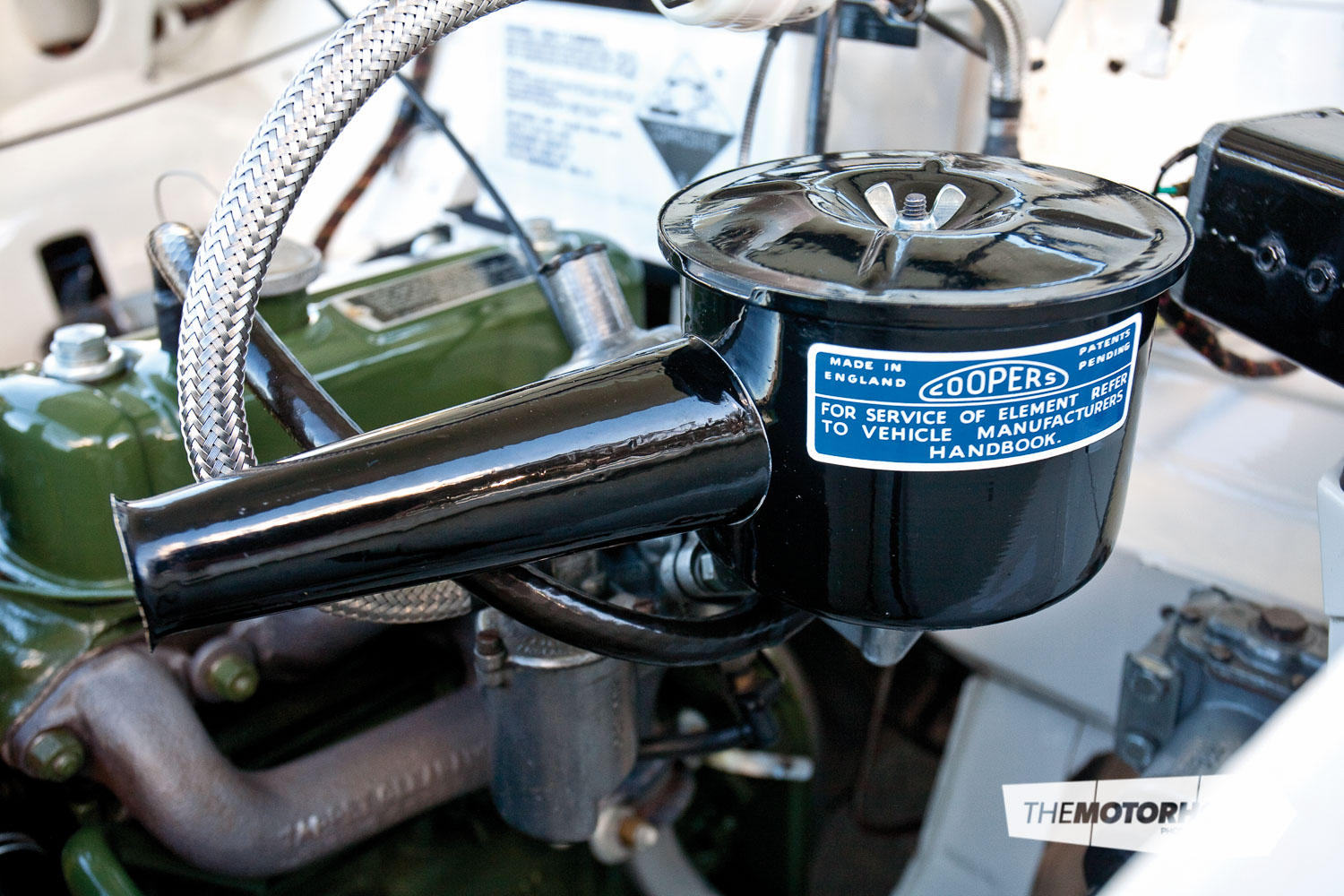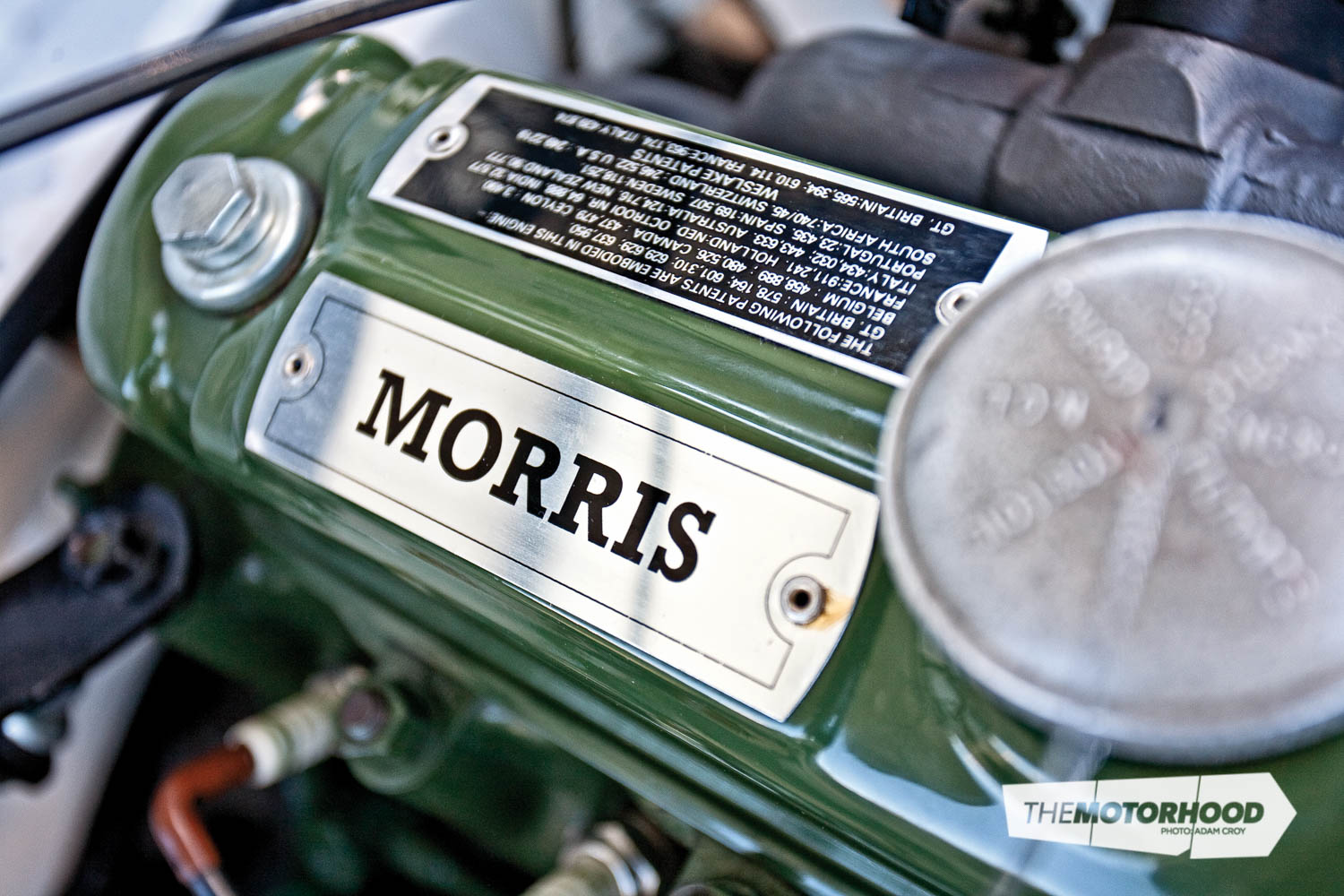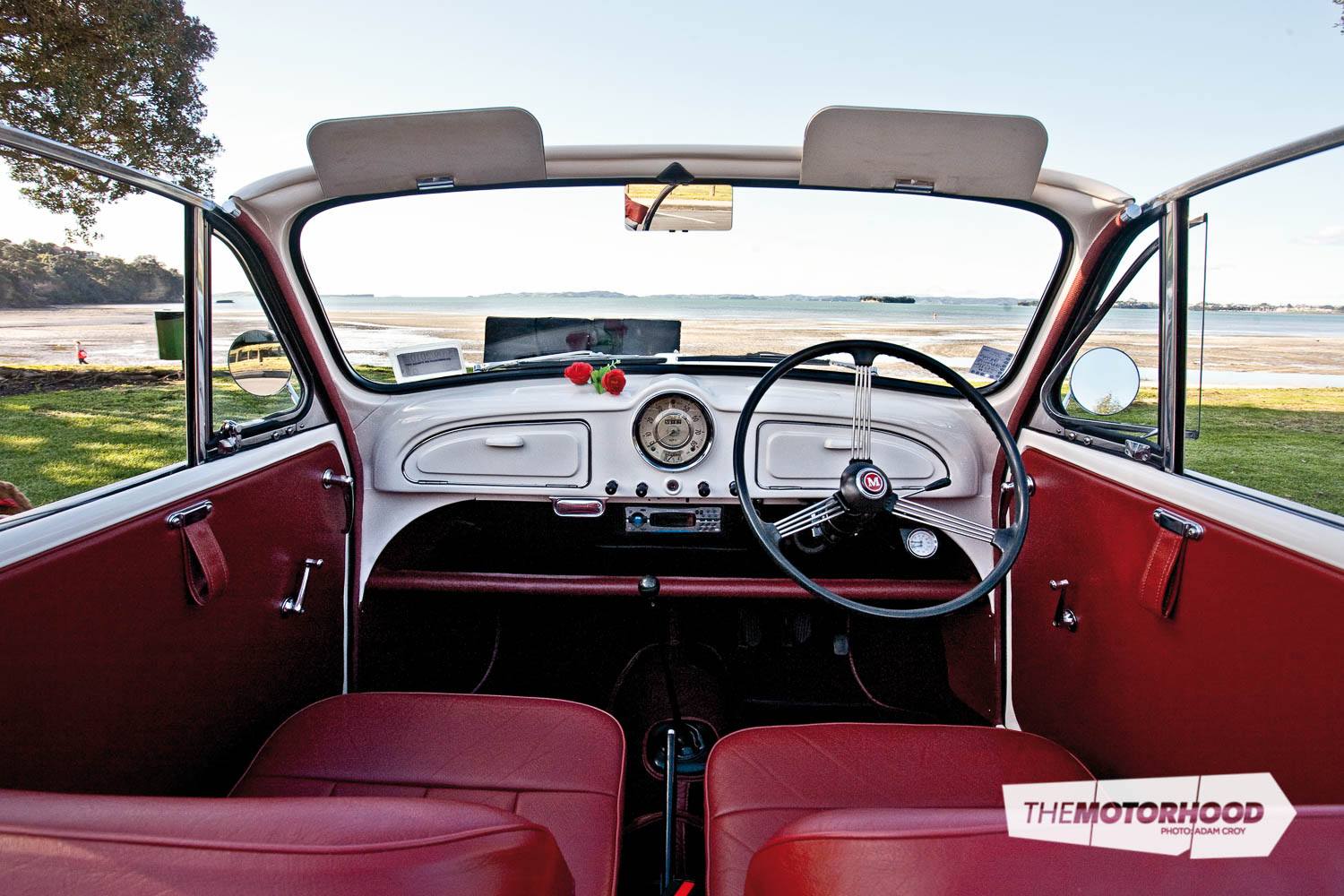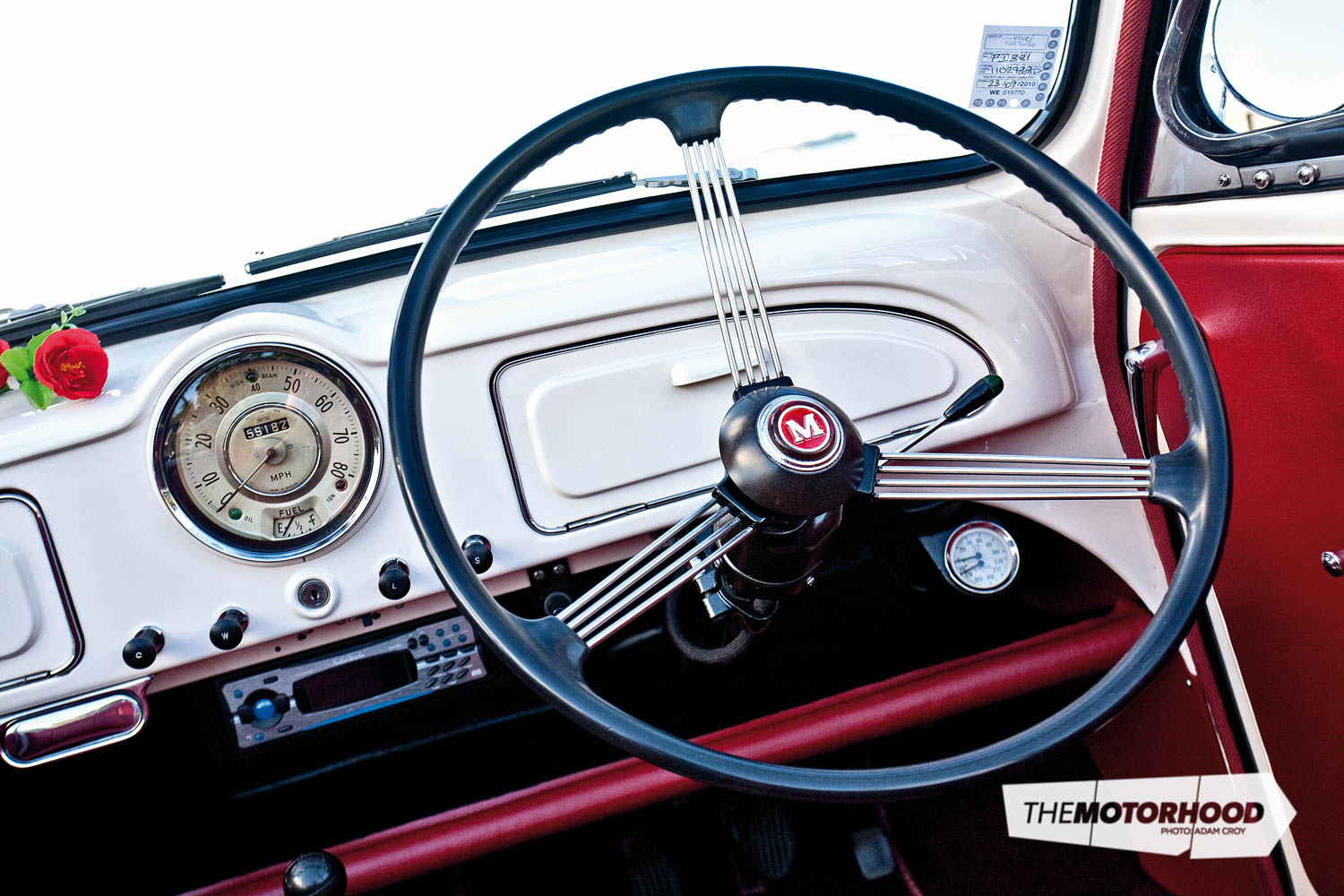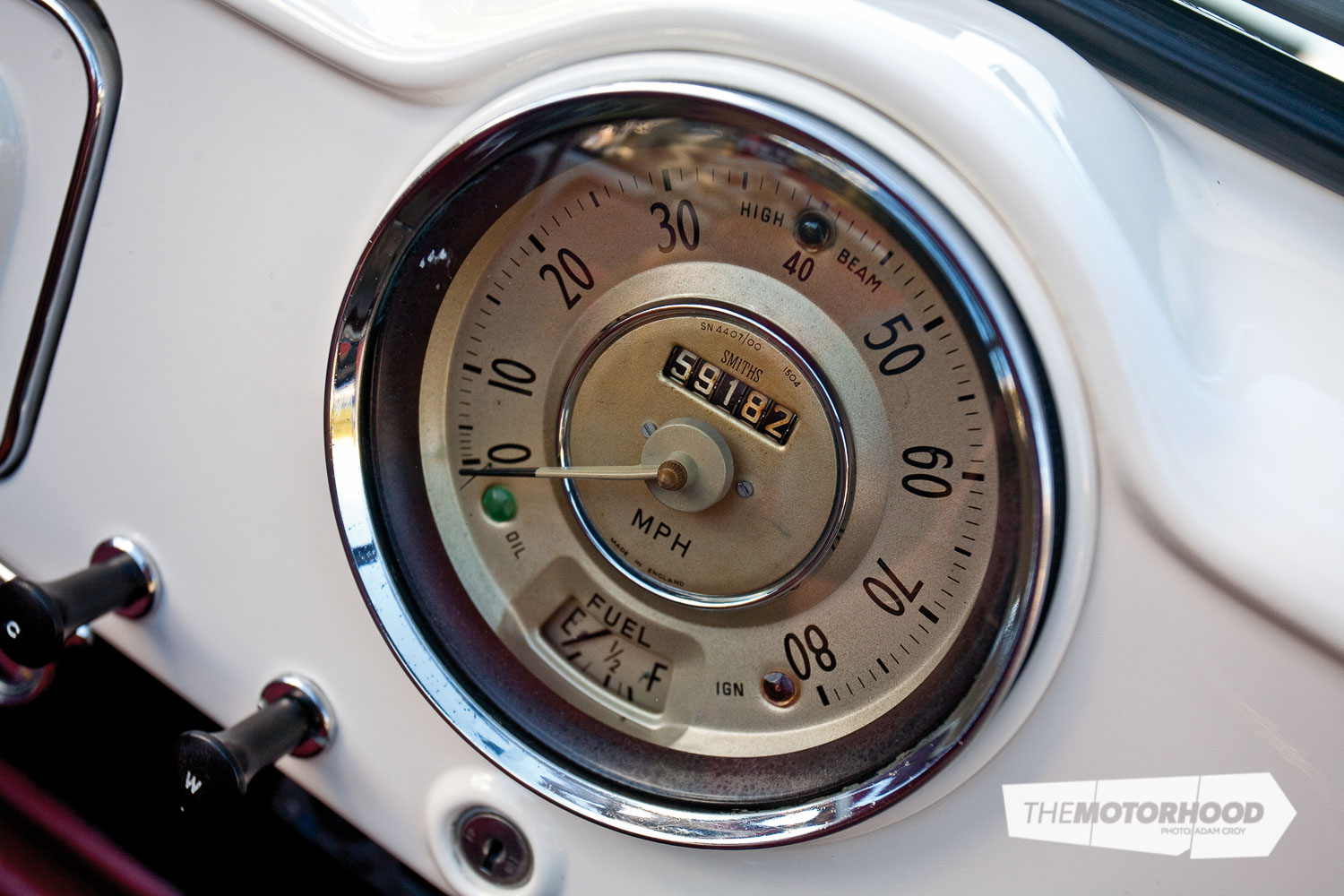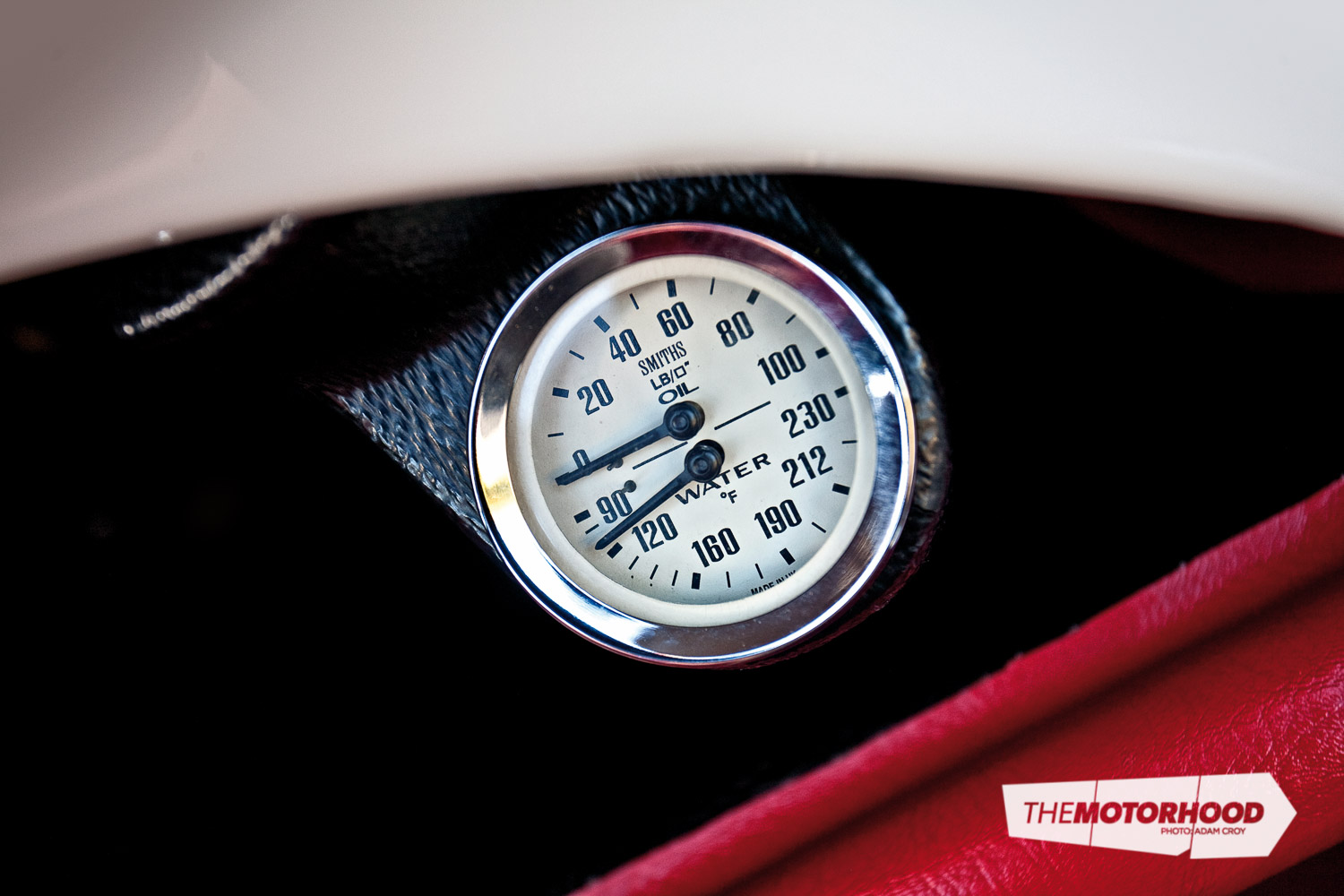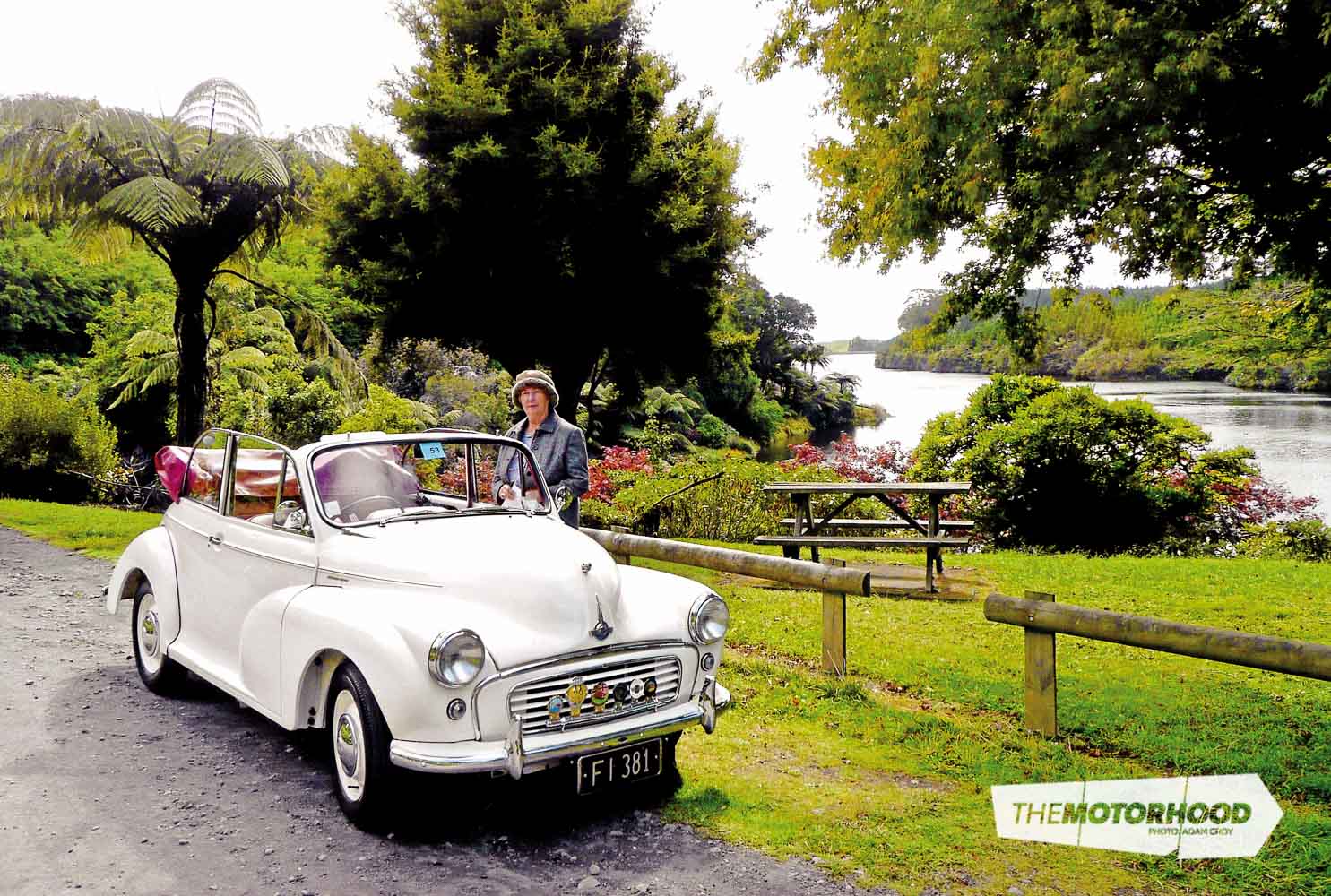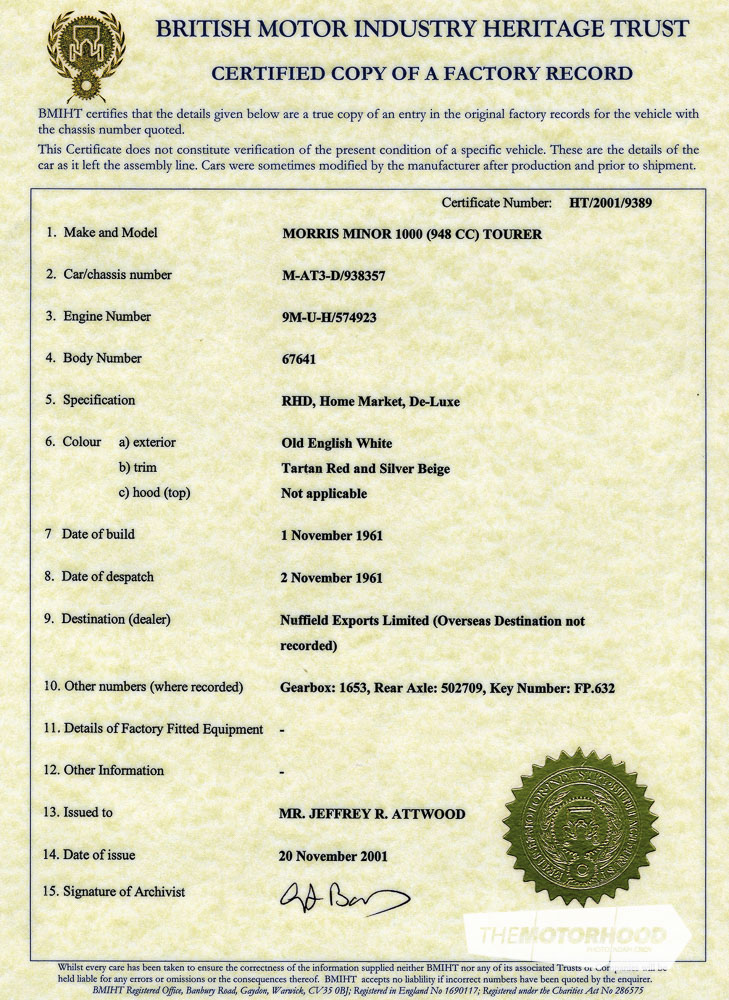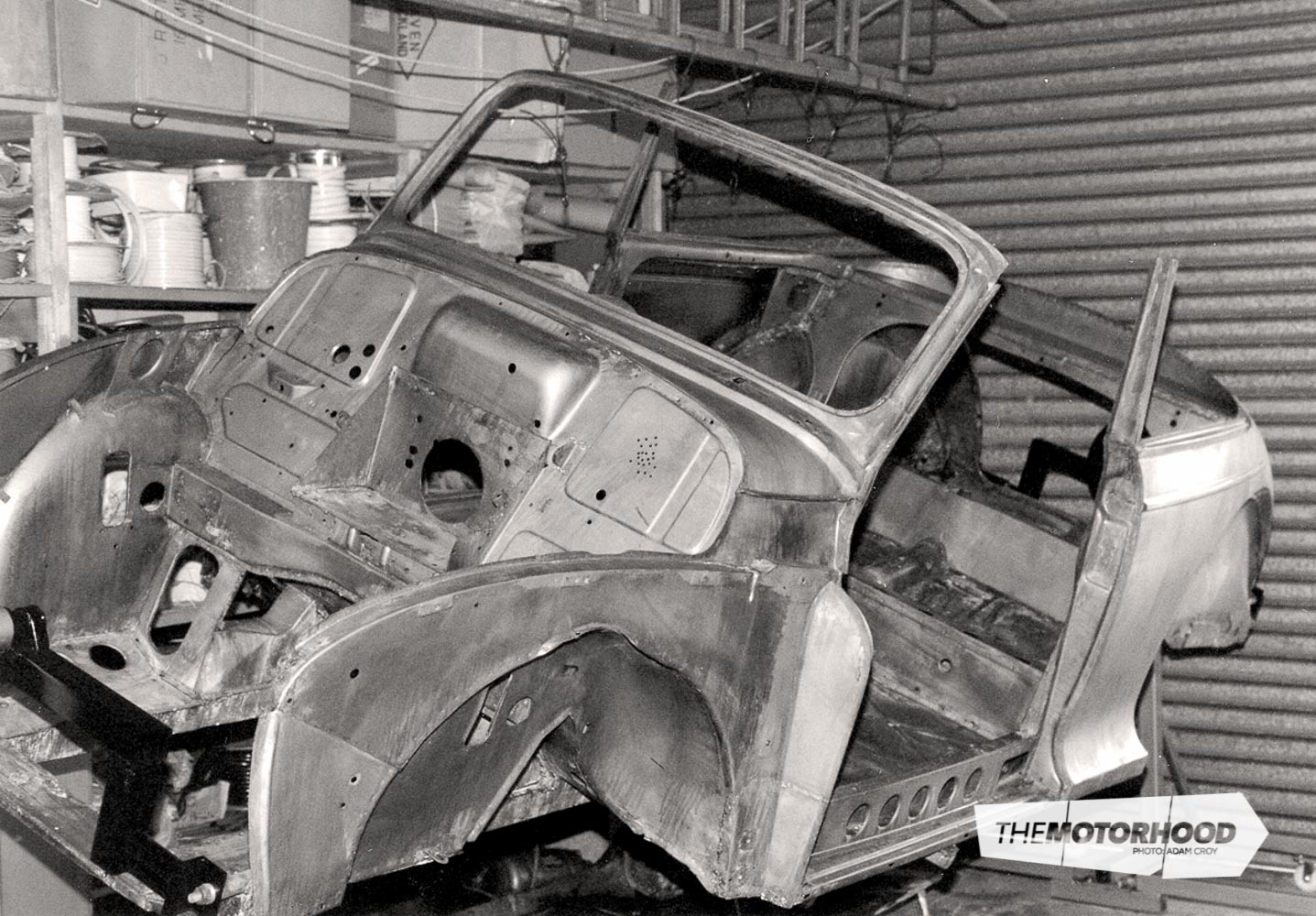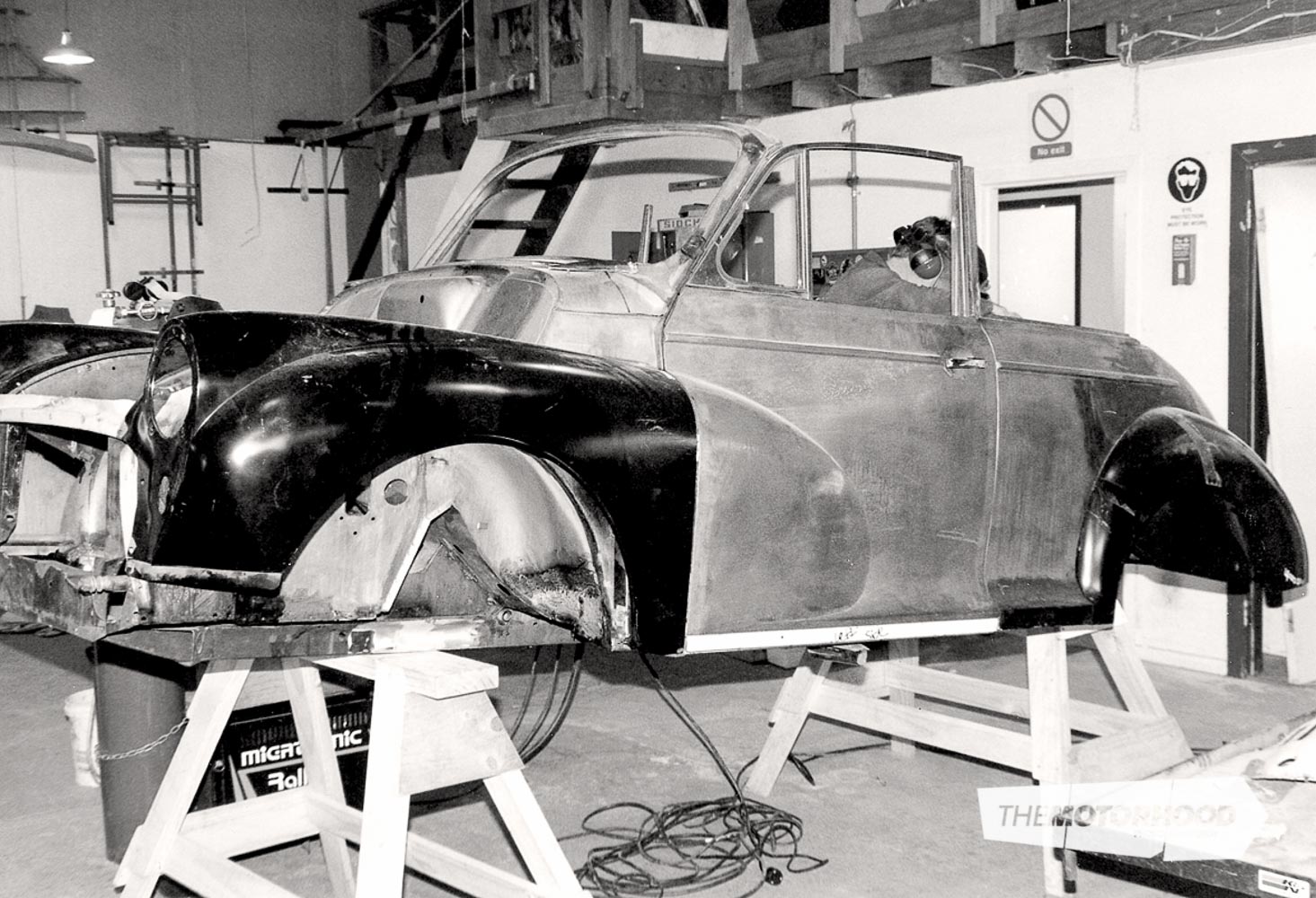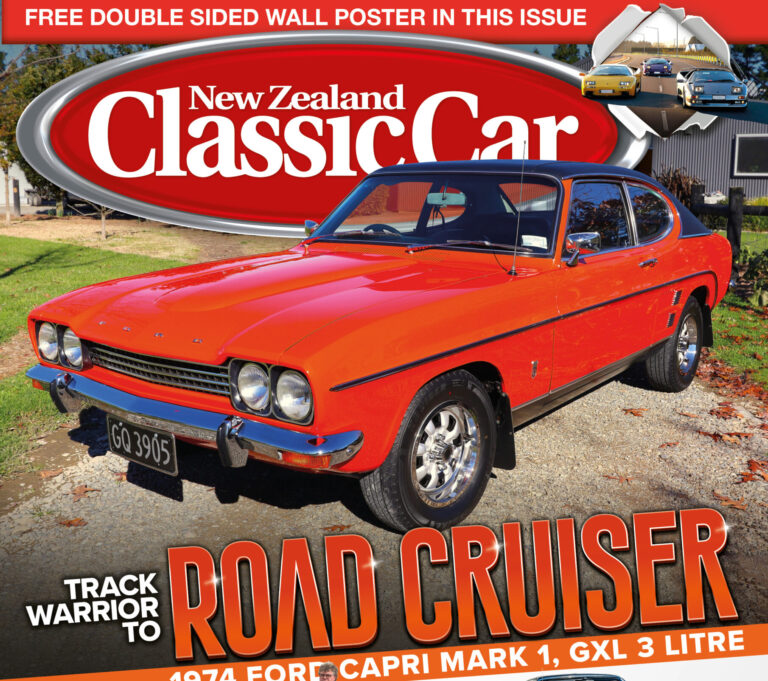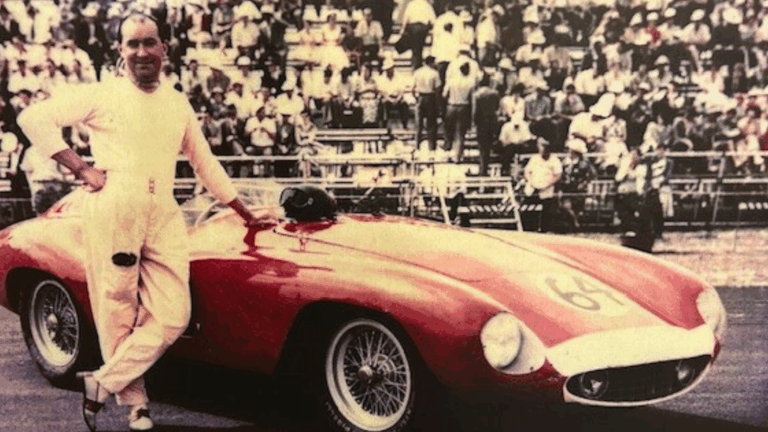data-animation-override>
“The Morris Minor (Morrie) was an instant hit from the first day it was shown to the British public in 1948 at the London Motor Show”
Designed in the mid-1940s by Alec Issigonis, the Morris Minor boasted a contemporary unit constructed body, torsion bar front suspension, rack and pinion steering and a low centre of gravity achieved by using small 133mm size tires on 14-inch wheels. This innovative design was, at that time, state of the art for small car development and years ahead of the pre-war engineering that could be found under most of the European economy cars of the time.
Along with the four-seat convertible and saloon variants, an estate version was also introduced – known as the Traveller (a Morris naming tradition for estates, also seen on the Mini) – along with van and pick-up versions. Rear bodies of the van versions were all steel.
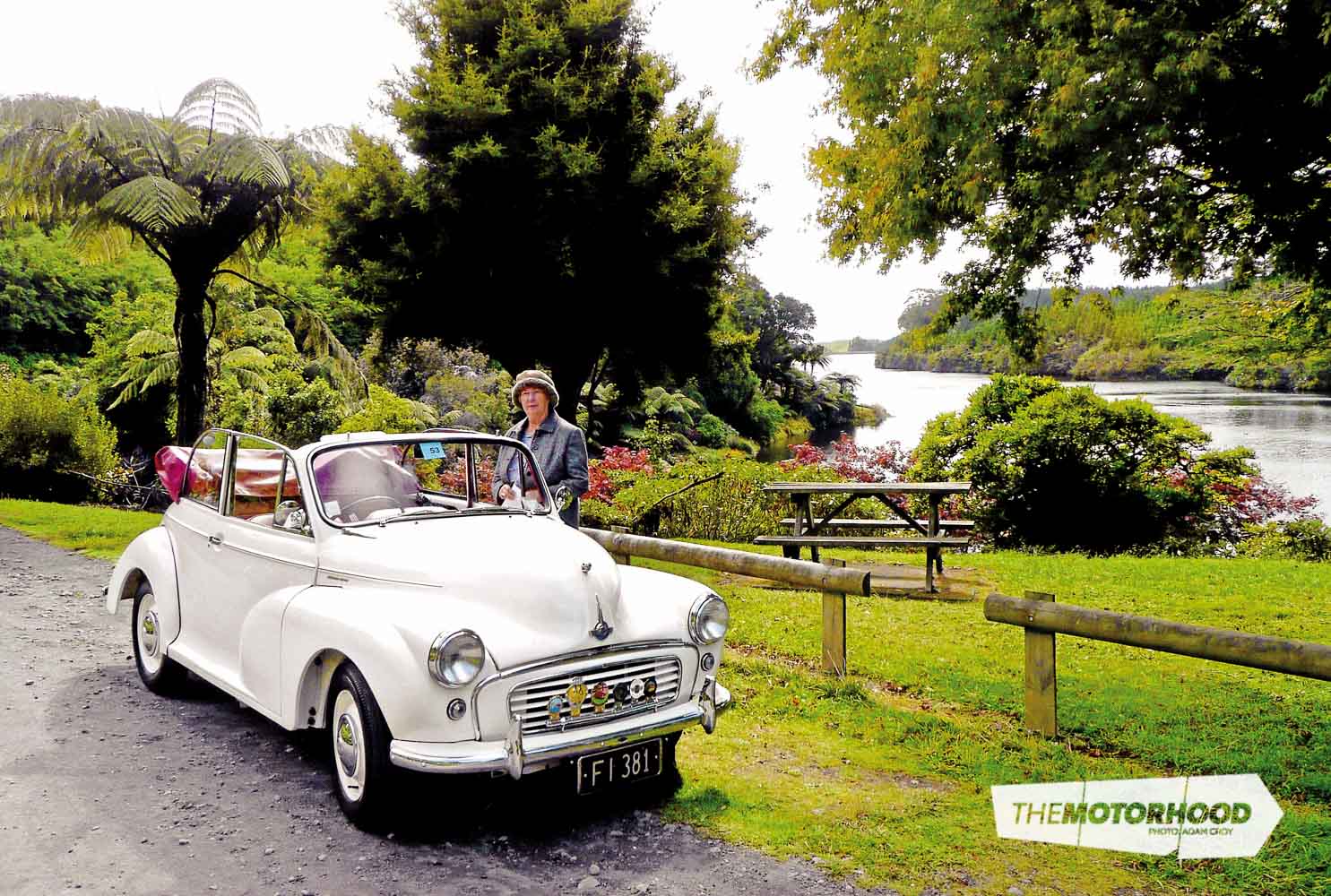
In 1962 the Morris Minor 1000 was upgraded with the more powerful 1098cc engine to provide better performance and more relaxed cruising. The final improvements were made in 1964 and were confined to a two-spoke steering wheel, revised seats and switchgear and the replacement of the ‘pull-start’ button with a combined starter/ignition switch.
As an everyday car, the Morris Minor makes sense. Unlike most classic cars, you can keep these little vehicles running almost indefinitely due to the fact that every part you will ever need is inexpensive and readily accessible through numerous parts suppliers worldwide, which is probably why Minors are still so popular today.
Morris Minors and 1000s are amongst the most popular, family-sized classic cars around today and continues to rapidly gain popularity. The continuing affection for the ‘Moggie’ as it is warmly referred to in Britain, or ‘Morrie’ as it is often known in Australia and New Zealand, is reflected in the number of restored and improved Morris Minors currently on the road today, including our very own featured 1962 convertible, affectionately known as Monique.
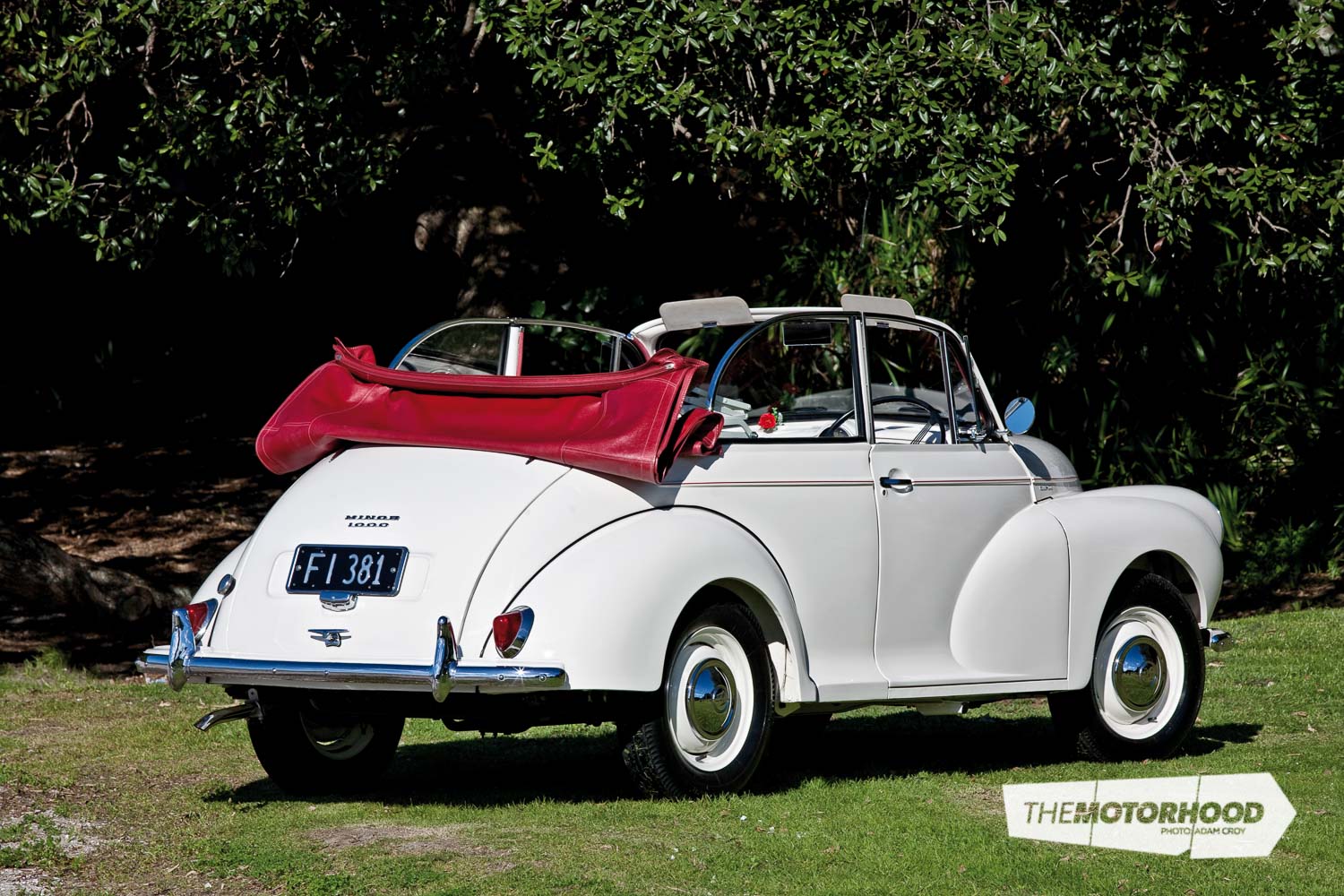
Jeff’s girls
Jeff Attwood’s passion for Morris Minors began back in the late 1950s when, at the tender age of just 16, he began an electrical apprenticeship. In order to commute to and from his new job, Jeff required reliable transport and thought a Morris Minor would make an ideal first car.
Didn’t we all? I remember my first Morrie, acquired when I was still going to college. I went on to own two more before moving up to something a bit bigger, and more powerful. All this reminiscing is making me feel old, so I’ll continue with Jeff’s wonderful story.
He eventually found his first Morris Minor in Mission Bay. It was a grey two-door 1950 low-light which he ended up keeping for six years. Jeff has fond memories of his first car because when he was out one Saturday night in his Morrie, he spied Doreen across the crowded dance floor and after many outings in the Morrie she became his wife.
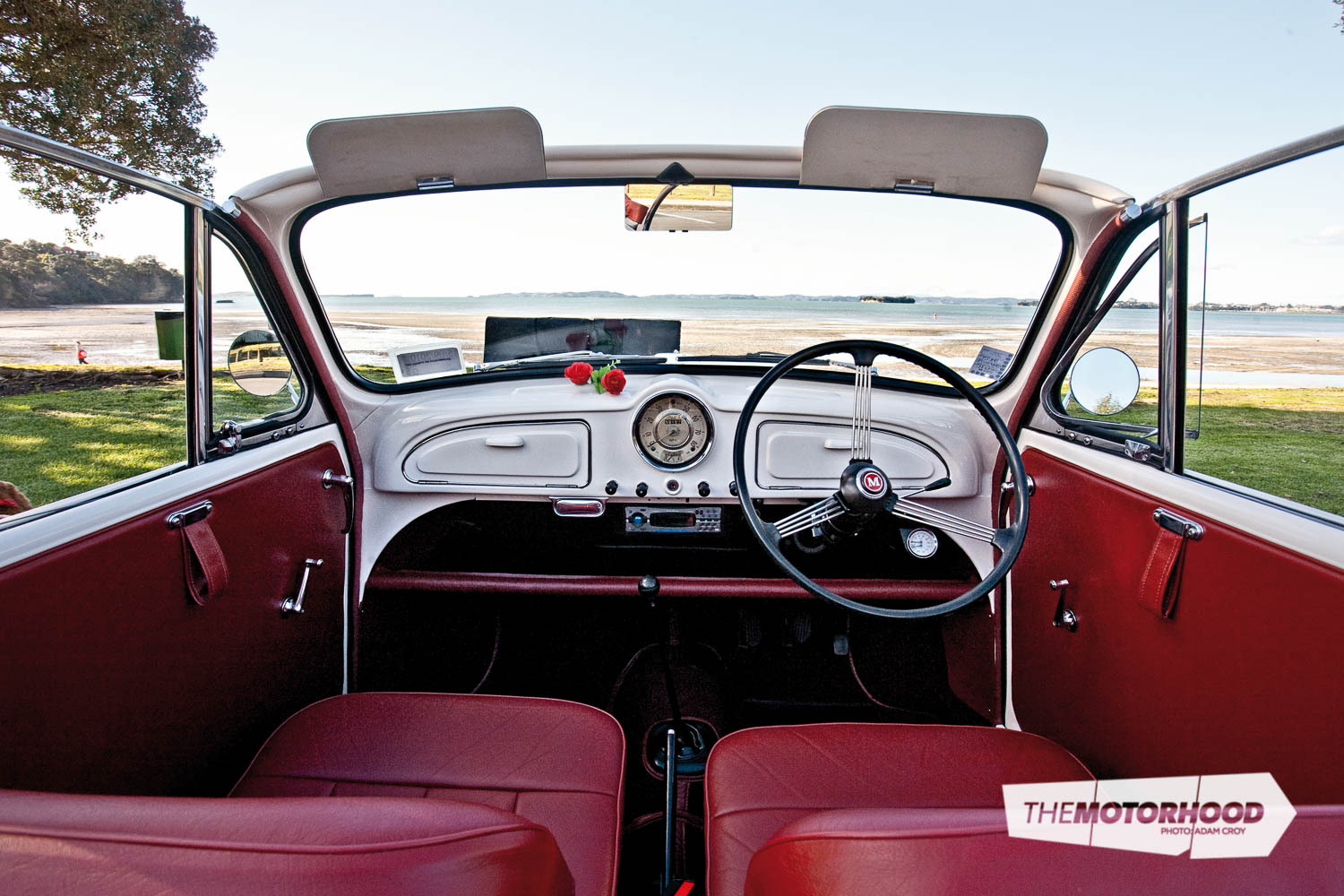
After six faithful years the Morris was sold to make way for a van Jeff needed to start his own business. It was a sad occasion to see his faithful old Morrie go, as it would be many years before another one would find its way into the Attwood garage. In fact it wasn’t until Jeff and Doreen’s daughter came home from school one day exclaiming that she’d just spotted the perfect car for her to learn to drive at Archibald & Shorter’s in Greenlane.
Greenlane beckoned, and there in the window, taking pride of place alongside several impeccably presented Jaguars, was a green 1962 four-door Morris Minor. Jeff and his daughter immediately fell in love with the little Morrie, which fulfilled everyone’s wishes, and a Morrie was back in Jeff’s garage once again.
They named the little green car Monika, and Jeff joined the Auckland Morris Minor Enthusiasts Car Club, which has since amalgamated with the Auckland Morris Minor Car Club.
Monika served Jeff and Doreen well for many years of club outings and National Morris Minor Conventions. However Jeff felt Monika needed some company after the fifth Morris Minor Convention, held at Southwards Museum and hosted by the Wellington club. Jeff was in awe of the late Jim Carrick’s magnificently restored split-windscreen convertible, and became so besotted that he had to have a convertible of his own.
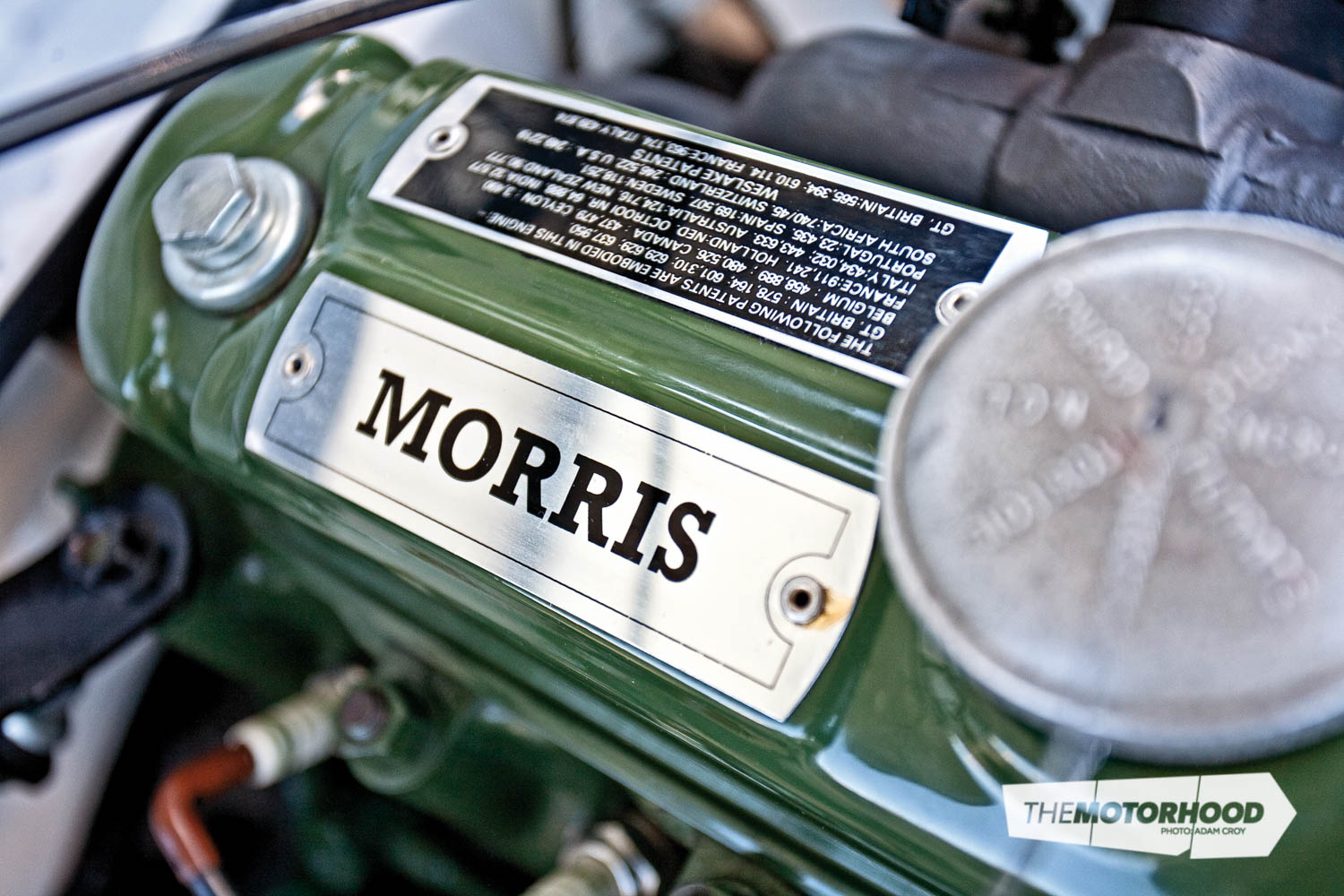
Upon their return to Auckland the hunt was on, as they scoured the papers for a Morrie convertible to park beside Monika. One Saturday morning in April 1995 Jeff found what he’d been searching for in the NZ Herald classifieds, a white 1962 Morris Minor convertible. Off he went to inspect the car, returning to announce that he’d found Monika a sister, which would arrive the following week.
Convertible problems
Unfortunately Monique, the new convertible and sister to Monika, hadn’t stood the test of time too well, as her earlier years in Bermuda meant that rust had taken its unrelenting toll.
Monique was registered in Auckland on December 21, 1970, after her trip from Bermuda.
Although there are no records to show when she actually arrived there, but Jeff suspects she was probably exported to Bermuda direct from England following dispatch from Nuffield Exports Limited. The car was manufactured on November 1, 1961, at the Morris factory in Cowley, England, and was dispatched for delivery on November 2, 1961, destined for export.
After no less than seven New Zealand owners and a failed warrant of fitness due to excessive rust, Jeff and Doreen decided to embark on a full restoration to bring Monique up to Monika’s fine standard.
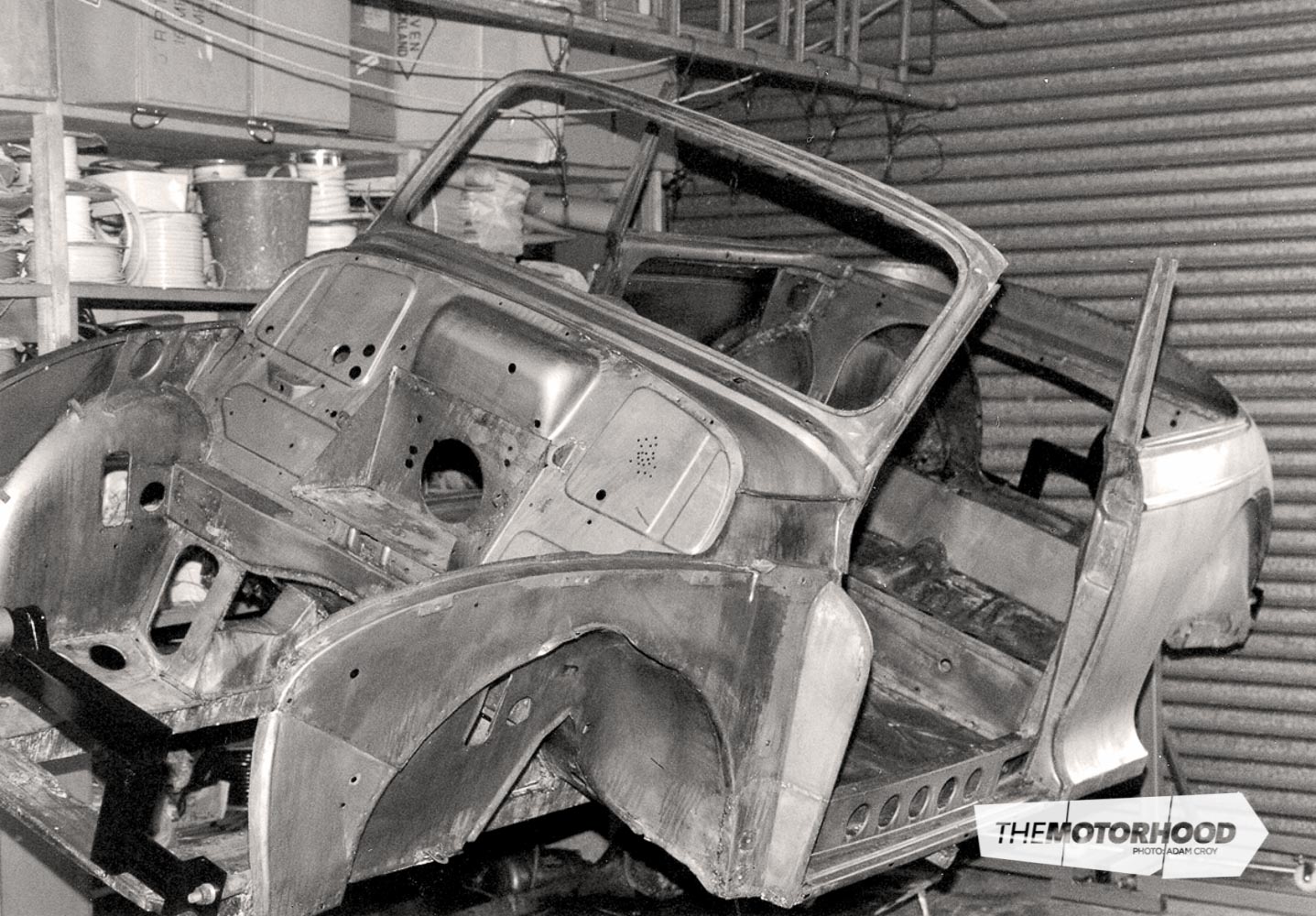
Monique was completely stripped and the body shell acid dipped. The full extent of the rust was clearly evident after this process, which meant that many body panels including the complete floor, front and rear guards, bonnet, doors and the front and rear valance and chassis rails had to be replaced. Autobodies of New Lynn carried out this task with meticulous care and attention before applying the Old English White paint scheme, the car’s original colour. Jeff spent many hours at Autobodies helping out wherever he could, and is extremely grateful to the team there for allowing him the opportunity. Jeff reckons he learned so much watching the experts applying their magical skills on his Morrie.
Once she was painted, the red leather upholstery – again exactly as it was originally – was stitched together and installed along with the vinyl convertible top by John Bonner of Blockhouse Bay.
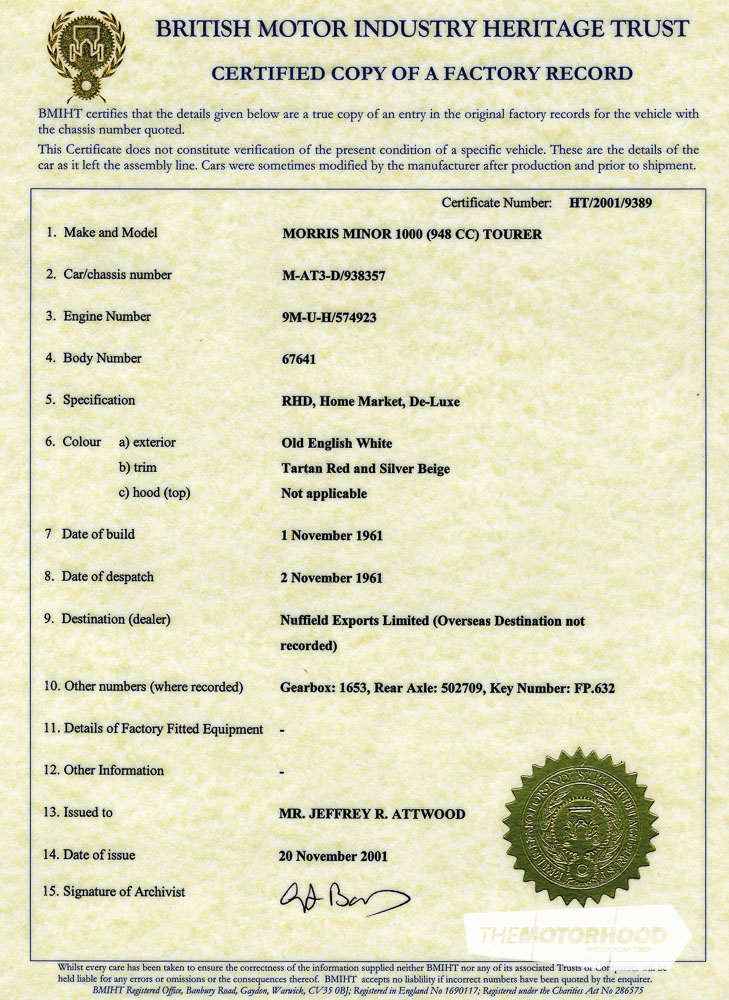
The engine that was in the car when Jeff purchased it was from a Morris Marina. Jeff decided he wanted Monique completely original, so he found the correct 948cc engine for her model. It was completely stripped and rebuilt to original specifications, and the standard four-speed gearbox has since been totally rebuilt.
Jeff re-assembled the entire car, piece-by-piece, box-by-box from assorted parts, each meticulously restored to perfect condition and/ or replaced with new items wherever necessary.
Celebrity status
The restoration took six years to complete, and was finally finished in 2001. Although I have to say you’d swear this car was completed yesterday, the detailing and level of perfection is astounding.
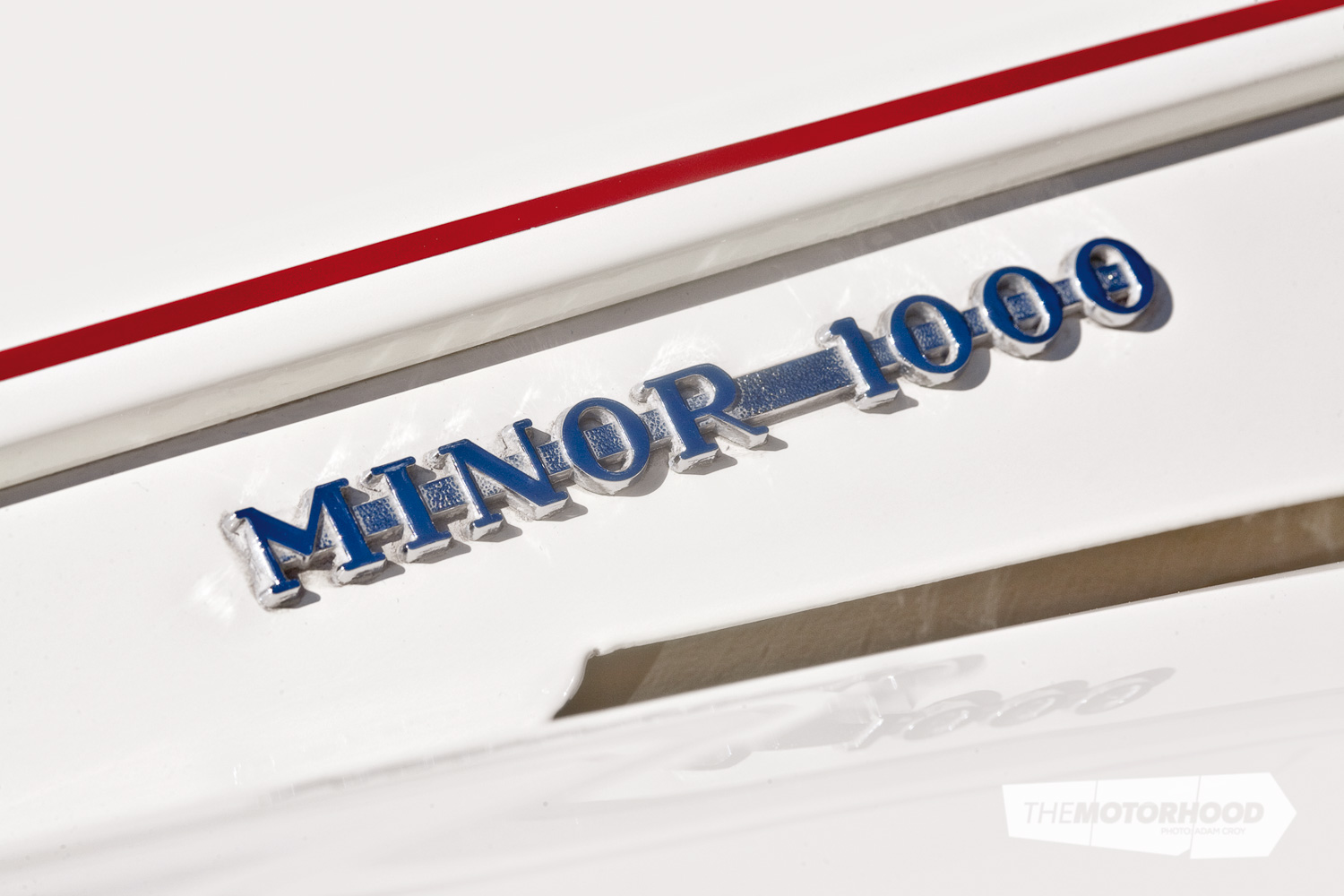
For 10 years now, Jeff and Doreen have taken Monique the length and breadth of New Zealand, including Gisborne, Christchurch, Invercargill, Masterton, Nelson, Dunedin and New Plymouth on more than one occasion, attending many New Zealand Morris Minor Car Club conventions.
Monique has taken her fair share of beauty awards along the way, collecting several Best in Shows and Best Standard Restoration titles. She has also mixed it with New Zealand’s best, with an impressive second place in the Masters’ Class at the Ellerslie Intermarque Concours in 2002, as well as first place in the Meguiar’s Show and Shine at the same event the following year.
Monique has also become something of a celebrity as well, appearing in a Pumpkin Patch Summer Collection catalogue and making an appearance in a British television advertisement for Muller Light Yoghurt, which I believe is currently running in the UK.
One of the amazing things about Morries is that they seem to evoke so many memories for Kiwis, and become the centre of attention virtually wherever they go. Even on our photo-shoot people just had to stop and watch, some wanting to reminisce about their experiences with friends and family who owned Morries at some stage in their lives.
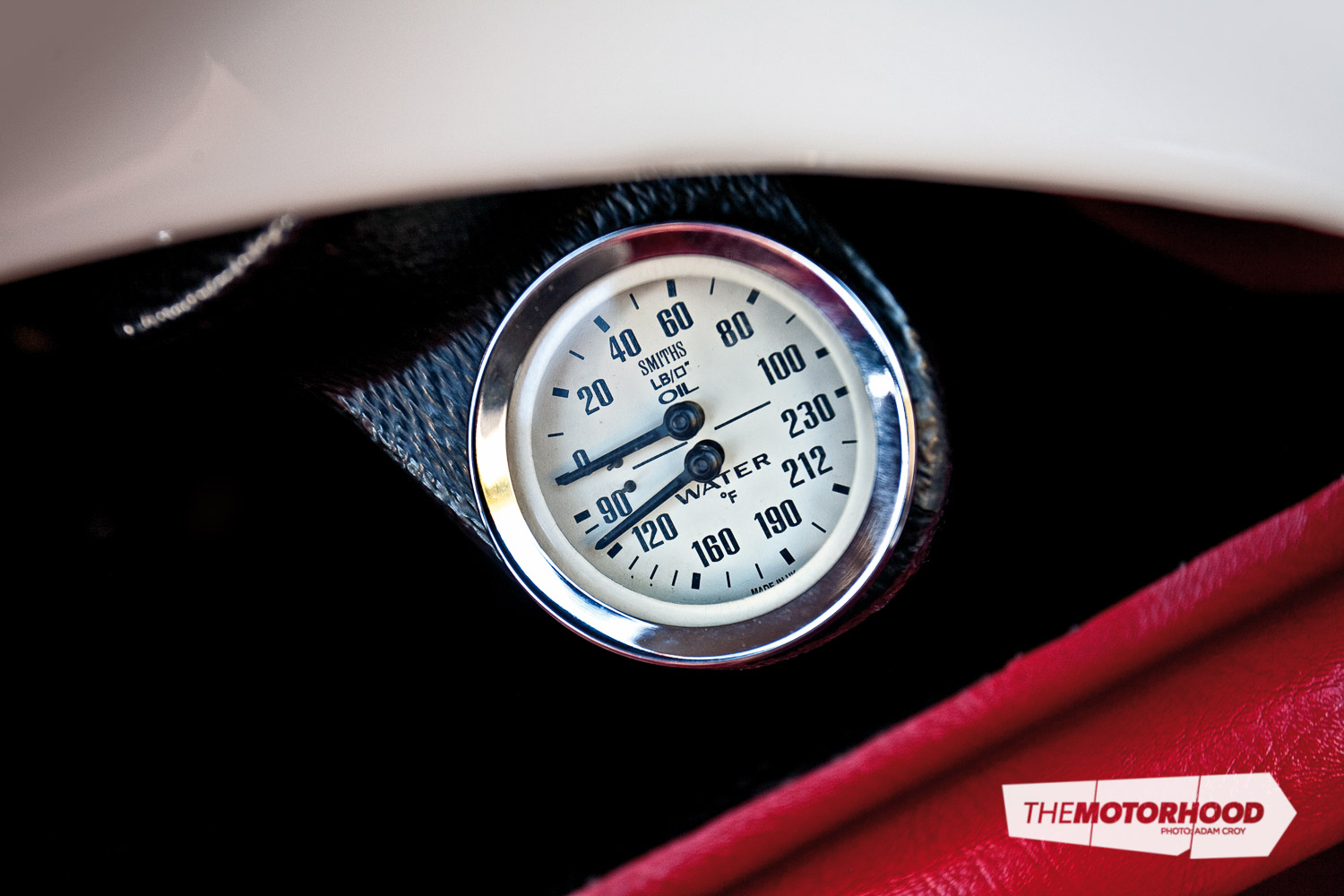
Monique has taken Jeff and Doreen on numerous happy adventures around New Zealand, meeting new people and making new friends along the way, and after 45 years the pair are still side-by-side in their Morrie Minor.
That, my friends, is what this wonderful hobby is all about.
1962 Morris Minor 1000 Tourer
- Engine: Morris in-line four-cylinder
- Capacity: 948cc
- Max power: 27.6kW at 4,800rpm
- Max torque: 76Nm at 2500 rpm
- Compression: 8.3:1
- Bore/ stroke: 62.93×76.2 mm
- Fuel system: SU carburetor
- Transmission: Four-speed manual
- Suspension: Front independent torsion bar, rear semi-elliptic leaf springs
- Steering: Rack and pinion
- Brakes: Front/ rear drum
Dimensions:
- O/all length: 3817mm
- Width: 1524mm
- Height: 1524mm
- Wheelbase: 2194mm
- Kerb weight: 939kg
Performance:
- 0-100kph: 25.9 seconds
- Standing ¼ mile: 23.4 seconds
- Max speed: 121kph
This article originally appeared in the October 2010 issue of New Zealand Classic Car (Issue No. 238). You can pick up a print copy or a digital copy of the mag now:
